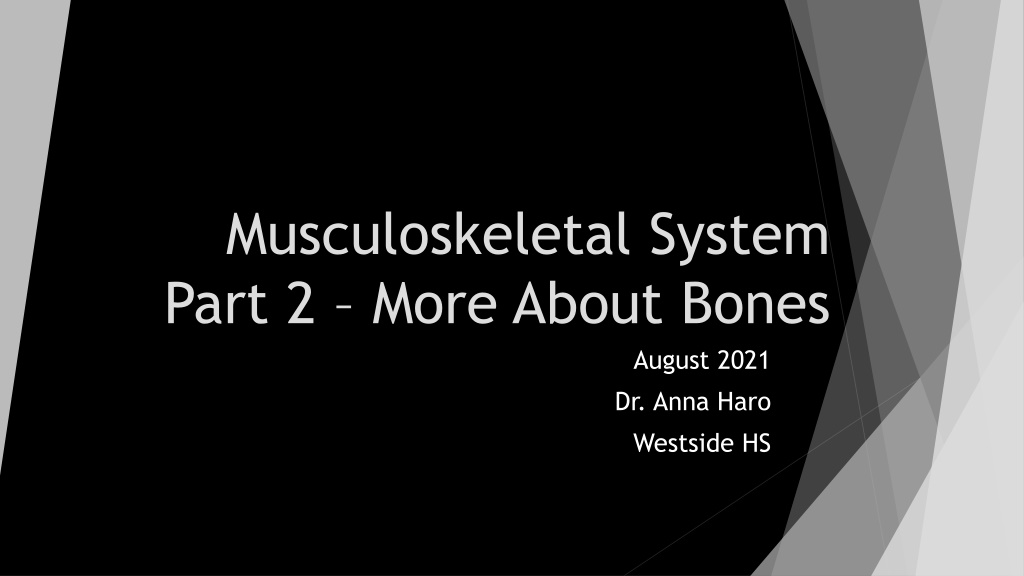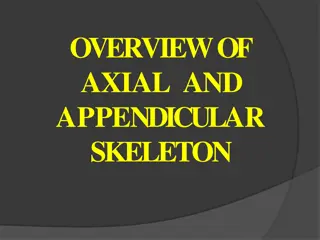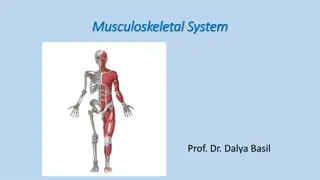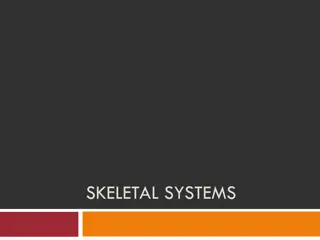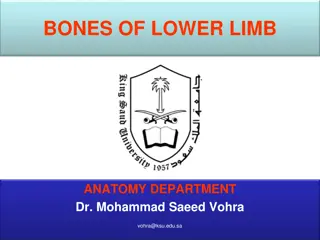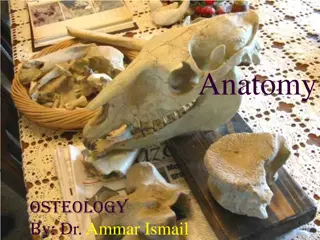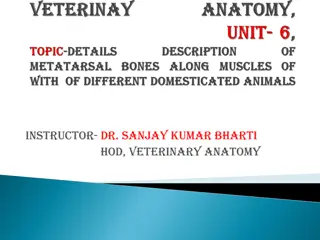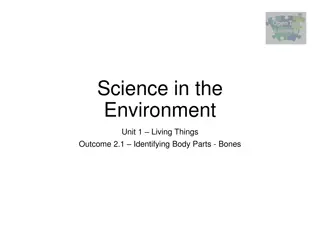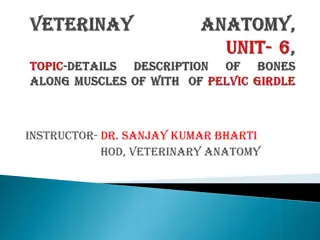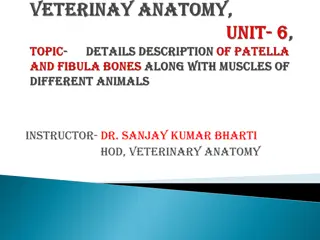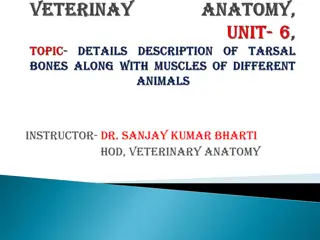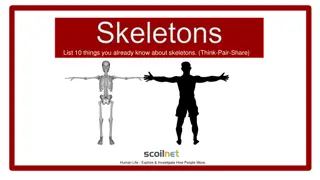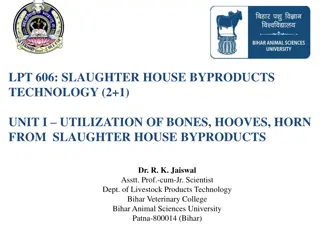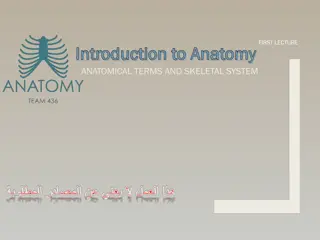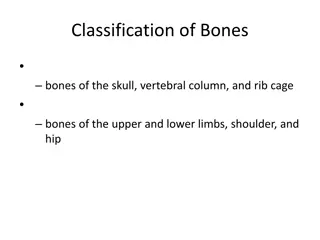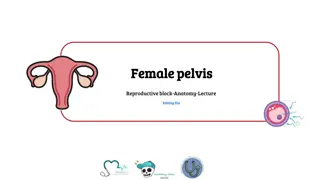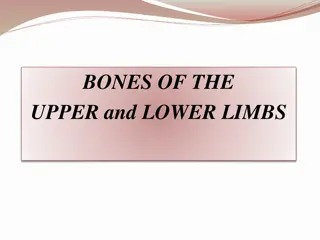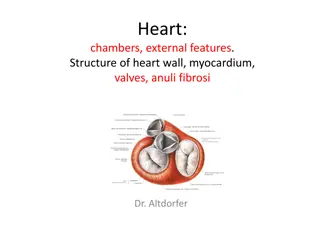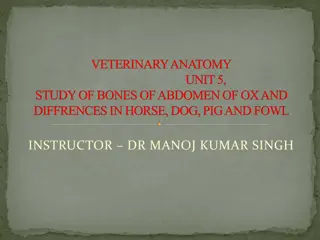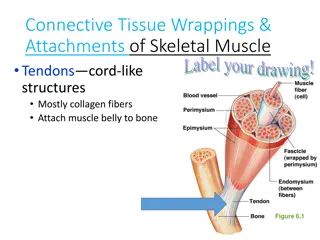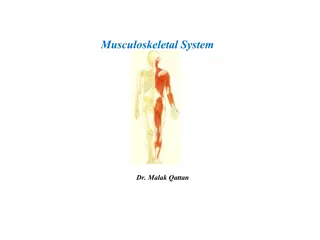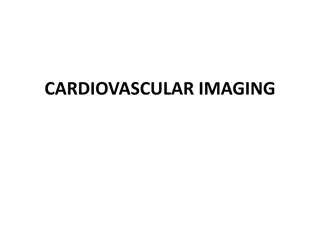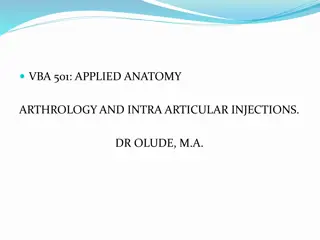Exploring Human Skeleton Anatomy: Bones, Structure, and Functions
Delve into the intricate details of the human skeleton, including the organization of bones in the axial and appendicular skeletons. Learn about the different bones comprising the skeletal system, their functions, and the significance of memorizing 144 bones. Discover learning objectives related to human biology and cellular knowledge, along with practical activities for self and peer assessment of model drawings of the human skeleton. Uncover various references for further exploration of bone anatomy.
Download Presentation

Please find below an Image/Link to download the presentation.
The content on the website is provided AS IS for your information and personal use only. It may not be sold, licensed, or shared on other websites without obtaining consent from the author. Download presentation by click this link. If you encounter any issues during the download, it is possible that the publisher has removed the file from their server.
E N D
Presentation Transcript
Musculoskeletal System Part 2 More About Bones August 2021 Dr. Anna Haro Westside HS
LEARNING Objectives TEKS: 130.231.(c)(1)(A, & B) and 130.231.(c)(2)(A, B, C, F, & G) & (3)(B) Students will apply previous knowledge of human and cellular biology. Students will identify the organization of bones in the human skeleton. Students will name 144 bones in the human skeleton. Students will self and peer-assess 4 different model drawings of the human skeleton.
Objetivos de aprendizaje TEKS: 130.231.(c)(1)(A, & B) and 130.231.(c)(2)(A, B, C, F, & G) & (3)(B) . Los estudiantes aplicar n conocimientos previos de biolog a humana y celular. Los estudiantes identificar n la organizaci n de los huesos en el esqueleto humano. Los estudiantes nombrar n 144 huesos del esqueleto humano. Los estudiantes evaluar n por s mismos y por sus compa eros 4 dibujos de modelos diferentes del esqueleto humano.
Anatomy The bones are divided into two groups in the human skeleton: the appendicular and the axial skeletons. The axial skeleton consists of the head, spine, and thoracic regions. The extremities make up the appendicular, including the lower extremities: hips, _____________, ankles, feet. The upper extremities: shoulders, arms, wrists, hands, are part of the ______________ skeleton.
144 bones memorize these The 24 vertebrae (C1-7, T1-12, L1-5). The 56 phalanges of the four extremities. The 10 metacarpals of both hands. The 10 metatarsals of both feet. The 24 bones of the rib cage. The mandible, scapula, clavicle, sternum, humerus, radius, ulna, sacrum, coccyx, femur, tibia, and fibula.
Questions about bones? I don t have most of the answers, but I can help you find the right references. Remember the HON-code? https://www.hon.ch/HONcode/
References https://www.visiblebody.com/learn/skeleto n/types-of-bones https://askabiologist.asu.edu/biology- bits/bone-bits https://my.clevelandclinic.org/health/body /21048-skeletal-system https://depositphotos.com/203149044/stoc k-illustration-thoracic-cage-made-bones- cartilage.html (good illustration of the ribs) http://www.fisiokinesiterapia.biz/downloa d/skeletonp.pdf 1. 2. 3. 4. 5.
Activity today:***Daily grade*** Life-size human skeletons. 1. You will self-assess your own human skeleton. 2. You will also peer-assess three other drawings from your student colleagues. Write the poster number at the top. 3. Circle the names of the bones that are drawn and labeled correctly. 4. Add up the total number of bones and write the total on the bottom.
